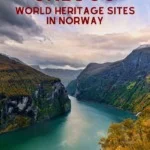Did you know that Norway is home to eight UNESCO World Heritage Sites? Each one showcases a unique aspect of the country’s natural beauty, cultural heritage, or industrial history, making them some of the most rewarding places to visit.
If you're looking for inspiration for your next Norwegian adventure, this list is a fantastic place to start.
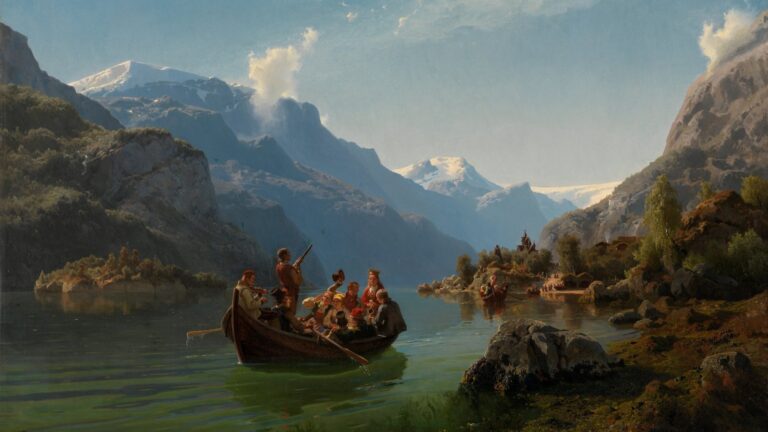
World Heritage Sites are landmarks or areas recognised by UNESCO as having outstanding value to humanity. They may hold cultural, historical, scientific, or environmental significance, and are legally protected under international treaties.
Being listed as a World Heritage Site can shine a global spotlight on a place, often transforming it into a must-see destination for travellers eager to experience a country’s heritage first-hand.
In Norway’s case, these eight sites span from Arctic petroglyphs to fjord landscapes and medieval architecture. Let’s explore them all.
What is a UNESCO World Heritage Site?
A UNESCO World Heritage Site is a place recognised by the United Nations as having outstanding cultural or natural value to humanity.
These sites are carefully selected for their universal importance and are legally protected under international agreements.
From ancient monuments to striking natural landscapes, World Heritage Sites help preserve our global story for future generations, and often become top travel destinations in the process.
As of 2025, there are more than 1,200 World Heritage Sites across the globe.
West Norwegian fjords
It should come as no surprise that the iconic Norwegian fjords have made the list. However, the UNESCO designation doesn't cover the entire “fjord Norway” region.
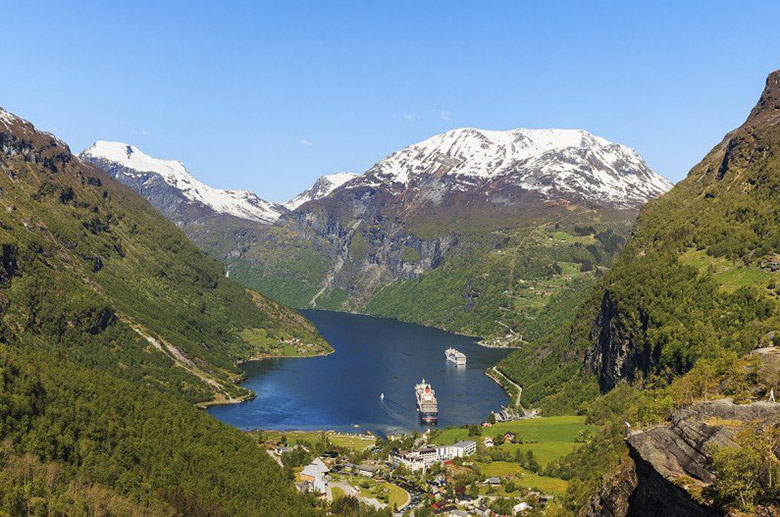
Instead, it focuses specifically on the Geirangerfjord and Nærøyfjord, two of the most spectacular fjords in western Norway.
These fjords are recognised for both their natural and cultural value—something only a handful of sites around the world can claim. Towering cliffs plunge into deep blue waters, waterfalls cascade down steep mountain faces, and lush forests are dotted with traces of centuries-old farms and grazing land.
The Geirangerfjord, with its classic S-shaped bend, is one of Norway’s most photographed natural wonders. The Nærøyfjord, narrower and more dramatic, offers a quieter, more intimate experience.
Both fjords are easily accessible by cruise ship, ferry or kayak, making them a highlight of any journey through western Norway.
Why visit? Few places on Earth rival the sheer drama of Norway’s fjords—this is natural beauty at its most awe-inspiring, accessible on foot, by boat or even by bike.
Bryggen – Bergen's hanseatic past
Bryggen is one of Norway’s most photographed sights, and with good reason. This colourful row of wooden buildings lining the harbour in Bergen was once the hub of the city’s bustling Hanseatic trading activity.
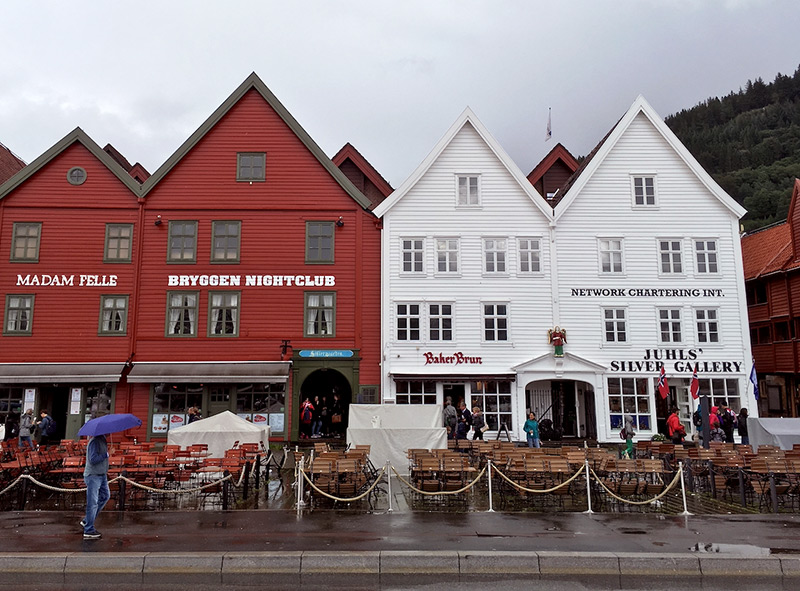
During the 14th to 16th centuries, German merchants lived and worked here, trading cod and other goods across northern Europe.
Despite repeated fires over the centuries (most recently in 1955), many of the original structures have been painstakingly restored using traditional materials and methods.
Today, Bryggen is a living heritage site, home to small museums, artisan workshops, galleries, and cafés.
Extensive preservation work is ongoing to protect the wharf for future generations, with some areas currently undergoing major renovation. The main Hanseatic Museum is closed, but guided tours still run with the Assembly Room still open.
Even so, visitors can still explore the narrow alleyways and timber-framed interiors, gaining insight into Bergen’s maritime past. It's also worth visiting Bryggens Museum, which features interesting archaeological exhibits.
Why visit? Bryggen blends history and charm. Walk its creaky wooden floorboards and you’ll feel transported straight back to the Middle Ages.
Røros – former mining town
Nestled high on a plateau in Trøndelag near the Swedish border lies the historic town of Røros.
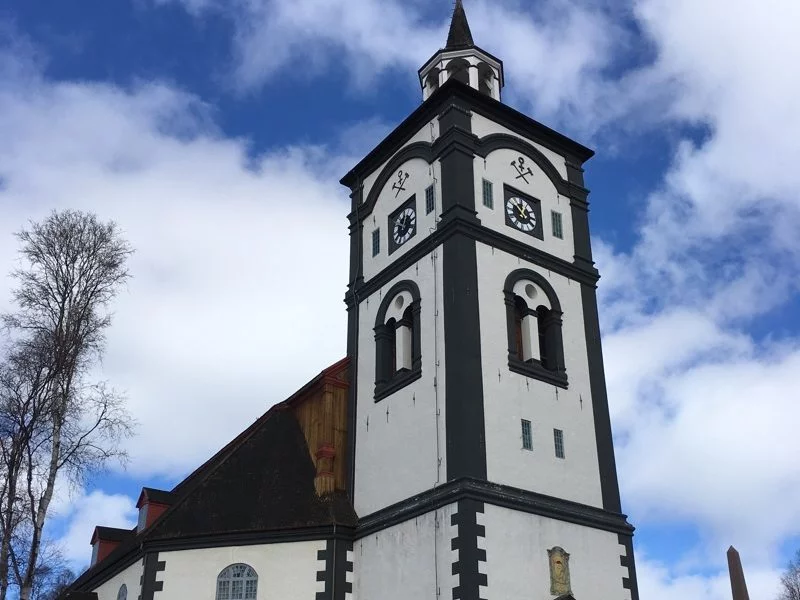
Walking through Røros feels like stepping back in time. The wooden houses are still lived in, many by descendants of the original miners, and the town retains a strong sense of identity rooted in both heritage and sustainability.
Røros is now known as a leader in sustainable tourism and food production. Local products such as reindeer meat, artisan cheeses, and the award-winning Røros Butter are celebrated nationwide.
In winter, the snow-covered streets add a fairy-tale charm, especially during the town’s annual Christmas market.
Why visit? Røros offers a rare combination of preserved heritage, living culture, and a strong culinary identity, all in a stunning mountain setting.
Urnes Stave Church
Perched above the Lustrafjord in Vestland, Urnes Stave Church is one of the most iconic examples of Norwegian wooden stave church architecture.
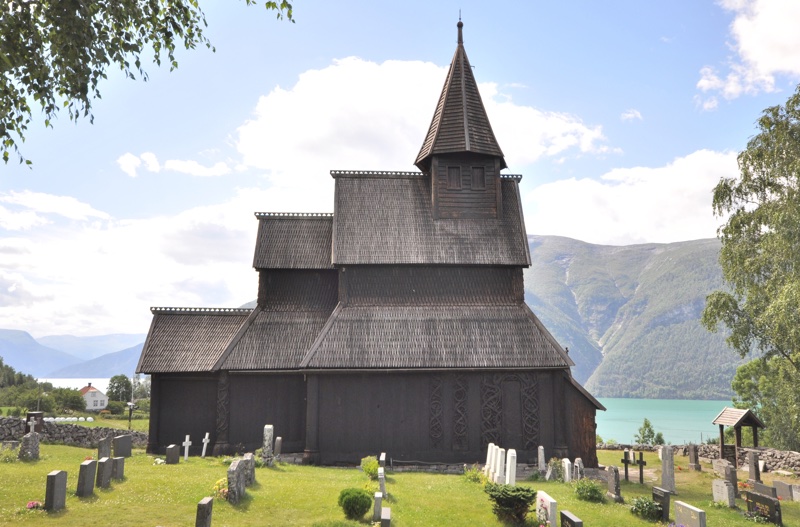
Built around 1130, it is the oldest known stave church and provides a fascinating link between early Christian and Viking art traditions.
The church features intricate carvings with motifs drawn from Norse mythology, seamlessly blended into Christian symbols. Archaeological evidence shows that at least three earlier churches once stood on the same site, reflecting its long-standing religious importance.
Although remote, Urnes is one of the most rewarding cultural stops on a tour of the fjord region. From the small ferry landing, a scenic uphill walk leads visitors to the church, which offers sweeping views across the fjord.
Why visit? Urnes is more than just a beautiful church. It’s a rare and atmospheric window into the meeting of Norse and Christian worlds.
Alta Rock Art
Located far above the Arctic Circle in Finnmark, the rock art of Alta is the largest known collection of prehistoric carvings in Northern Europe. More than 6,000 individual figures have been discovered, some dating back as far as 4200 BC.
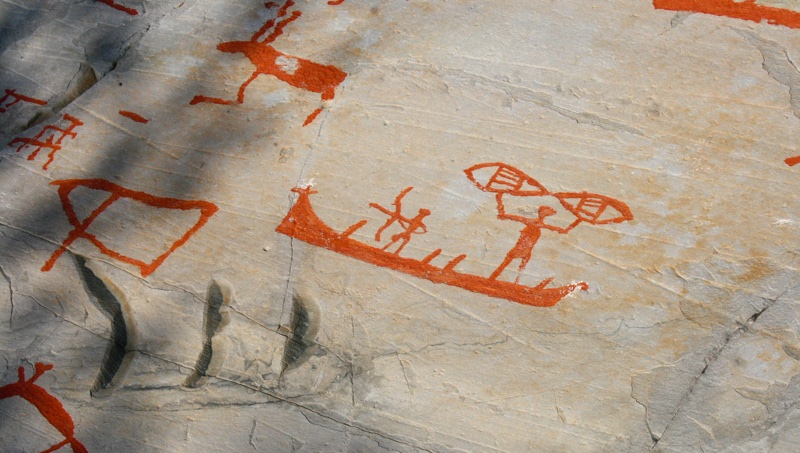
The petroglyphs depict scenes from everyday life: hunting, fishing, rituals, reindeer herding and human figures. These engravings offer invaluable insight into the beliefs and lifestyles of prehistoric peoples living in the far north.
Thanks to careful conservation work, many of the carvings are visible along outdoor walking trails at the Alta Museum, with helpful interpretation in English. Some carvings are filled in with red pigment for visibility, while others are left in their natural state.
Why visit? A trip to Alta reveals a deep human history in one of Europe’s most remote corners. It's a true Arctic adventure with a story to tell.
Rjukan-Notodden
This lesser-known site tells the fascinating story of Norway’s early 20th-century industrial boom.
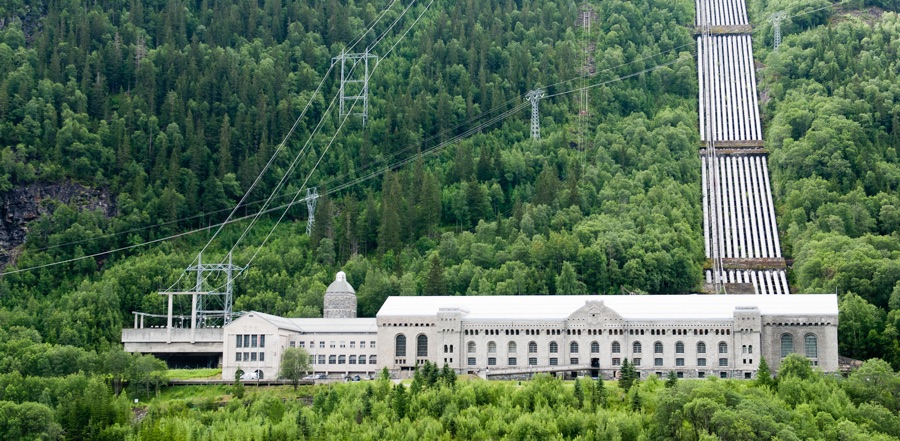
Located in Telemark, the Rjukan–Notodden area was developed by Norsk Hydro to harness hydroelectric power for the production of artificial fertiliser, which was a major technological breakthrough at the time.
The site includes power plants, pipelines, railways, tunnels, worker housing and factories. It also played a vital role in World War II during the ‘Heavy Water sabotage‘ campaign, when Norwegian resistance fighters targeted the local plant to prevent Nazi Germany from developing nuclear weapons.
Today, you can tour the industrial museums in Rjukan and Notodden, visit the Vemork plant, and explore historic workers’ homes. It’s a powerful reminder of how innovation and human ambition shaped modern Norway.
Why visit? For anyone interested in engineering, industry or wartime history, this site tells a compelling and often overlooked Norwegian story.
Struve Geodetic Arc
The Struve Geodetic Arc is not a single site, but rather a chain of 34 original survey points stretching over 1,750 miles from Hammerfest in Norway to the Black Sea.
Carried out in the 19th century by astronomer Friedrich Georg Wilhelm Struve, the measurements aimed to determine the exact size and shape of the Earth.
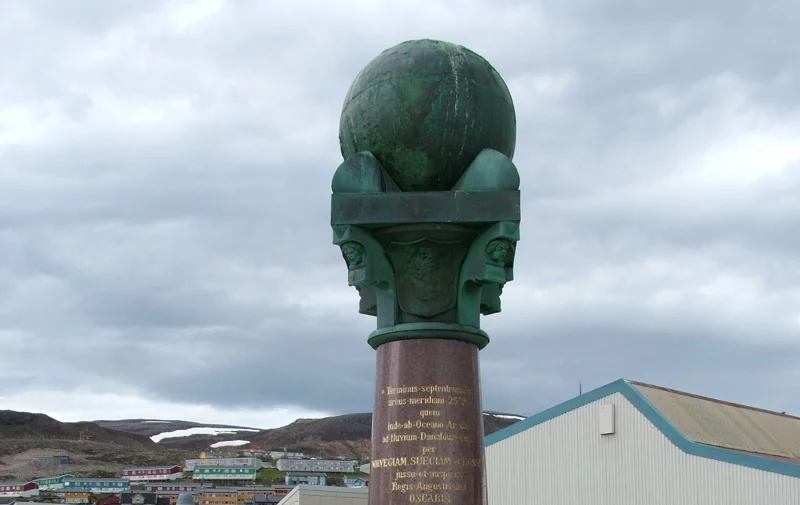
This remarkable feat of scientific collaboration involved scientists and rulers from ten countries, long before the days of international cooperation or instant communication.
In Norway, one of the original measurement points in Hammerfest has been preserved and marked for visitors, offering a fascinating insight into the precision and perseverance of early geographers.
Why visit? Stand at the edge of Europe and trace a line that helped measure the Earth, a quiet but profound scientific achievement.
The Vega Archipelago
Situated off the coast of Nordland, south of the Arctic Circle, the Vega Islands have been inhabited for over 1,500 years.
The local people developed a distinctive and sustainable way of life centred on fishing, farming and harvesting eider duck down. The latter is a unique practice still maintained today.
The archipelago consists of over 6,500 islands, islets and skerries, creating a rich and diverse coastal ecosystem. The Vega World Heritage Centre on Gardsøya tells the story of the islands’ natural and cultural heritage.
Although relatively remote, the Vega Islands are a paradise for birdwatchers, photographers and those seeking a quieter pace of life amid pristine nature.
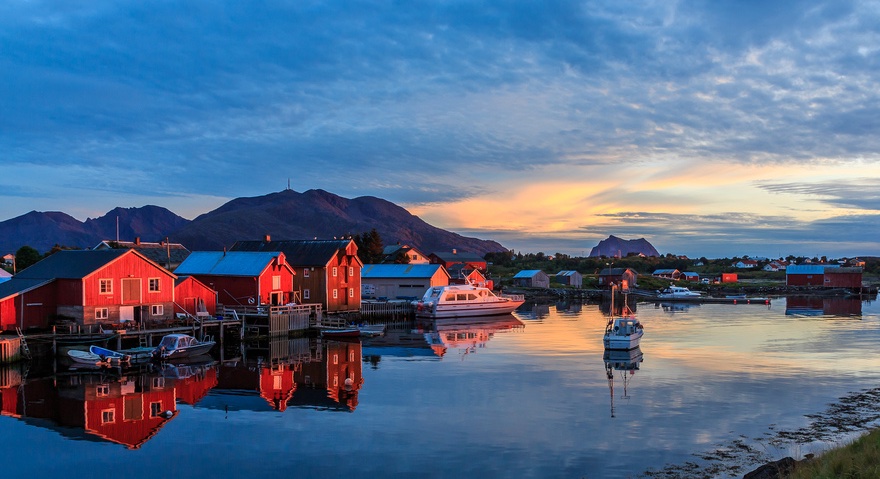
Why visit? Discover a rare blend of nature and tradition in one of Norway’s most peaceful and picturesque island communities.
Potential new additions
While Norway currently has eight recognised World Heritage Sites, several more locations have been put forward for consideration on UNESCO’s tentative list.
These sites represent significant cultural, historical, and natural value and could one day join the ranks of the officially inscribed. Here’s a closer look at some of the leading contenders:
Svalbard
One of the world’s northernmost inhabited areas, Svalbard is a remote Arctic archipelago located midway between mainland Norway and the North Pole.
Known for its dramatic landscapes of glaciers, jagged mountains and deep fjords, it is also famous for its population of polar bears, which outnumbers humans.
Beyond its natural beauty, Svalbard has a rich history of scientific research, mining, and polar exploration.
The cultural heritage of former mining settlements such as Pyramiden and Longyearbyen, along with the environmental importance of preserving a fragile Arctic ecosystem, make Svalbard a strong candidate for future UNESCO recognition.
Lofoten
Few places in Norway are as iconic as the Lofoten Islands. With their sharp peaks rising straight from the sea, white sandy beaches, and red fishermen’s cabins known as rorbuer, Lofoten offers some of the country’s most spectacular scenery.
The archipelago also holds deep cultural significance. Its cod fisheries have supported communities for over a thousand years and continue to play a vital role in Norway’s economy and identity.
The recent designation of Lofotodden National Park has further bolstered the case for protection, preserving both natural beauty and traditional ways of life in one of Norway’s most photographed regions.
The Laponian Area
The Laponian area in northern Scandinavia is a large cultural landscape that spans across the borders of Norway, Sweden and Finland.
While the core UNESCO site is currently located in Sweden, there is growing interest in including neighbouring parts of Norway to reflect the full scope of the region’s cultural and environmental heritage.
This area is home to a living Sami culture, where traditional reindeer herding continues to this day. Rich in biodiversity, the landscape includes mountains, wetlands and forests that have been shaped by human activity over thousands of years.
Recognition as a shared World Heritage Site would acknowledge both the environmental and indigenous cultural values of this unique region.
Viking Monuments in Vestfold
Southern Norway's Vestfold region is often referred to as the cradle of the Viking Age, thanks to its wealth of archaeological discoveries.
Among the most significant are the burial mounds at Gokstad and Oseberg, which once held richly adorned Viking ships. The remains are now displayed at the Viking Ship Museum in Oslo.
These monuments provide rare insight into the craftsmanship, seafaring skills, and spiritual beliefs of early Norse society.
Efforts are ongoing to have the region’s Viking burial sites, settlements, and ship finds recognised as a unified cultural landscape under the World Heritage programme.
If successful, it would give the Viking Age the global recognition many believe it deserves.

